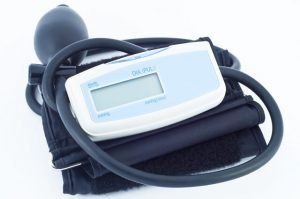
Free Consultation(203) 447-0000

Free Consultation(203) 447-0000
 You see the commercials and advertisements all of the time for defective medical device lawsuits, which begs the question: How are so many defective devices released to the market? Unfortunately, a recent study has uncovered several major flaws in the Food and Drug Administration’s (FDA) process for approving medical devices. At least four dangerously defective devices were expedited through the process – with very few tests performed, prior to doing so. Each one of those devices had caused severe injury, and some even resulted in death.
You see the commercials and advertisements all of the time for defective medical device lawsuits, which begs the question: How are so many defective devices released to the market? Unfortunately, a recent study has uncovered several major flaws in the Food and Drug Administration’s (FDA) process for approving medical devices. At least four dangerously defective devices were expedited through the process – with very few tests performed, prior to doing so. Each one of those devices had caused severe injury, and some even resulted in death.
All of those devices were used in patients without ample testing regarding their safety in the short- and long-term. For example, a hip implant device had released metal fragments into the body and caused surrounding tissues to slowly decay. Transvaginal meshes broke through the vaginal wall, causing serious, permanent injuries. The heart ring, which was used in patients without being approved by the FDA, and a defibrillator device each had wires that short-circuited inside the patient when they were not properly insulated.
The FDA uses their 510(k) clearance process to approve medical devices. This process is designed to allow medical manufacturers to release devices to United States consumers. As long as the device is “substantially equivalent” to another already approved on the market, it can be released. The FDA defines substantial equivalence as “the new device that is at least as safe and effective as its predecessor. This means that, if the manufacturer makes something equivalent enough, even without safety testing, it could be released. This is the core of most medical device issues in the United States – because of this lack of testing and the expedited 510(k) clearance process, dangerous devices are sometimes allowed into the market.
When someone becomes injured (or dies) because of a defective medical device, it becomes a product liability claim. There are three types of product liability claims that can be filed for defective medical devices, including:
Defectively manufactured devices are those that have been manufactured improperly, but were designed safely. This means that an error during the manufacturing process led to the defect; typically, there are only a handful of these devices on the market.
Medical devices with defective designs are a different story. Thousands of these devices could be released because, instead of only a handful being defective due to an error, all devices were created with a flaw in the design process. These devices are unreasonably dangerous and result in injury. Sometimes these devices can be used in the market for years before that design flaw is recognized. If the manufacturer knew that the design was dangerous, it could be considered liable under product liability law.
Defectively marketed devices have nothing to do with the manufacturing or the design. Instead, the device itself was marketed incorrectly. This means that a failure of warnings could have been the issue, or the device was marketed for uses other than its original intention.
If you or a loved one was seriously injured by a defective medical device, even if it was approved by the FDA, you may have options for recourse. You will need to speak with a product liability attorney first to assess your case. Contact Berkowitz and Hanna LLC today to schedule a no-obligation case evaluation. Call 866-479-7909 or contact us online to get started.
Berkowitz Hanna
